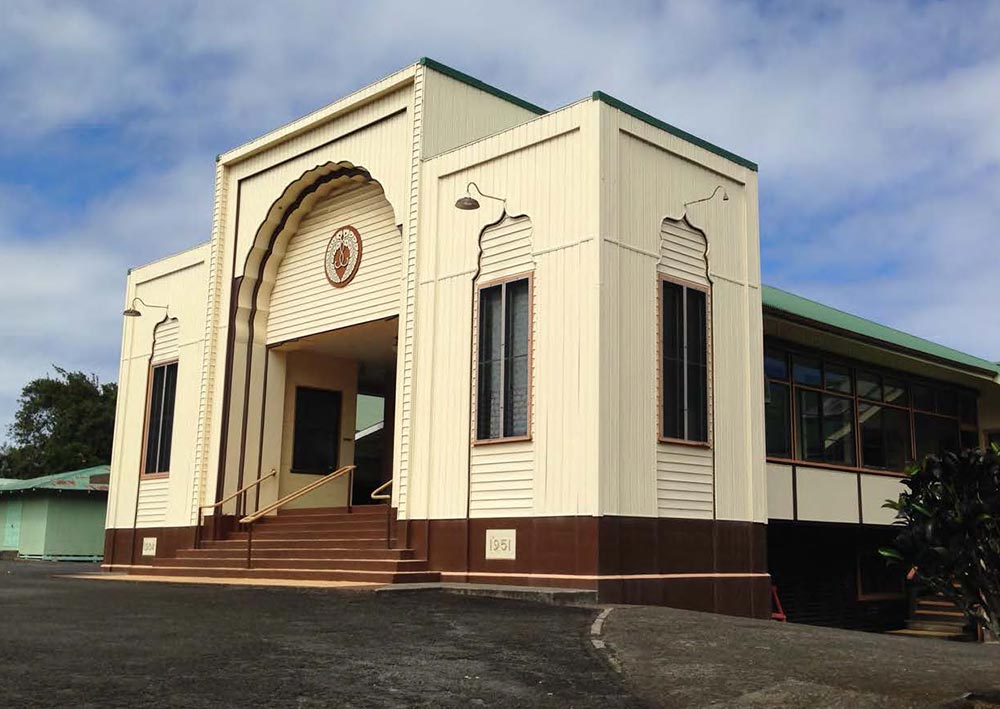Address
45-516 Lehua Street
Honokaʻa, Hawaii 96814
TMK
(3) 4-5-018:009
SHPD Historic Site Number
Not Yet Available
Historic Designations:
Hawai‘i Register of Historic Places
Abstract
The Honokaʻa Hongwanji Buddhist Mission consists of the Hondō (sanctuary) with attached Priest’s Residence dedicated in 1951; Judo Dōjō (training room) constructed in 1929 with additions added in 1954 and 1960; Social Hall, constructed in 1970; and the Honokaʻa Japanese Cemetery, located approximately a half mile outside of Honokaʻa on the Waipiʻo-Honokaʻa Highway. It is significant for its longtime association with the Hongwanji Buddhist Sect as a focal point of religious and social activities for generations of local Japanese since the first services were conducted in Honokaʻa in 1904. Also significant under Criterion C, each structure represents different architectural styles and characteristics. The Temple building represents the work of a master draftsman Charles Kohara following the Hawaiʻi International Buddhist architecture style which incorporates elements of Indian, Japanese and Western characteristics. The Mughal-style rounded arch at the building’s entrance with flat-roofed towers on each side and textured glass with a starburst design are examples. The Social Hall, classified as Mid-Century Modern, represents post-World War II plantation-inspired architecture with the hipped roof, in the same color and material as the roof of the Temple building, reinforcing a sense of place. The Judo Dōjō building with characteristics such as tongue and groove single-board walls, wood panel doors, exposed rafter tails, and totan roof is a good example of early Plantation-Era design and construction.
This list of Hawaii’s historic properties is provided as a public service by Historic Hawaii Foundation. It is not the official list of properties designated on the Hawaii State Register of Historic Places. For official designations and determinations of eligibility, contact the State Historic Preservation Division of the Department of Land and Natural Resources of the State of Hawaii at 808-692-8015.


